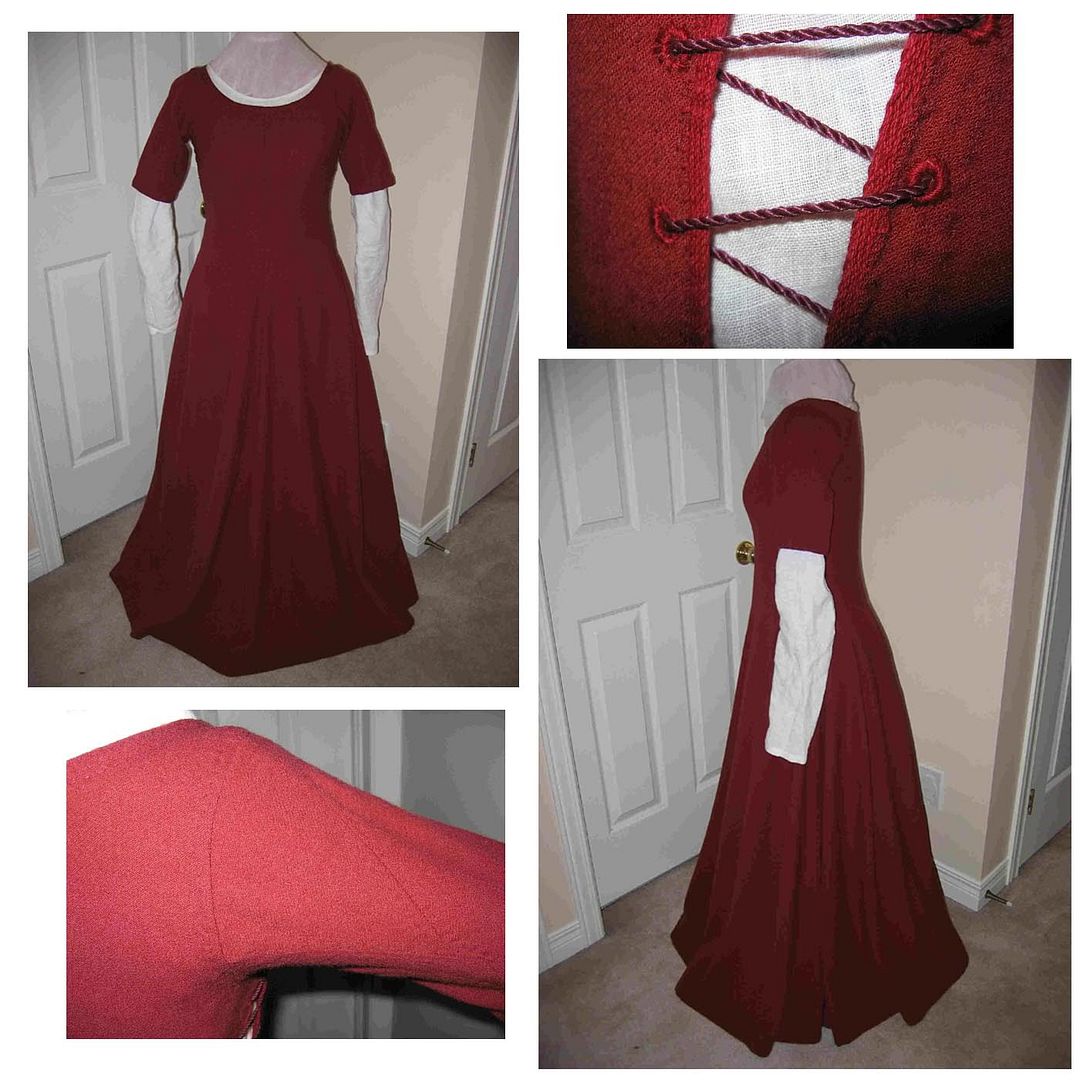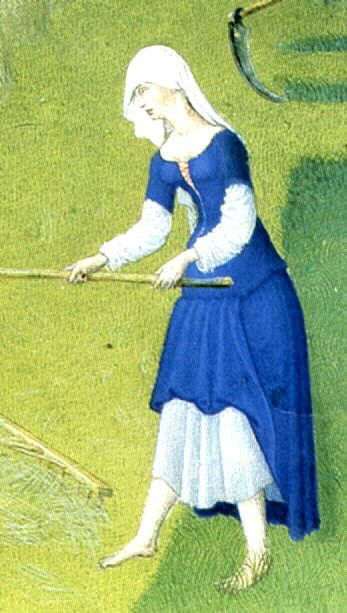Side-lacing kirtle
The pattern for this item is based on the Herjolfsnes gown # 39:


Some Clothing of the Middle Ages -- Kyrtles/Cotes/Tunics/Gowns -- Herjolfsnes 39, by I. Marc Carlson, Copyright 1997, 2003
The kirtle has two underarm-to-hem gores on both left and right sides, with additional triangular gores set into the front and back panels. The cut of the gores ensures a bias to straight-of-grain construction to these seams, which lends an elegant drape to the garment and also keeps the seams from warping and lengthening, as would happen in a bias to bias construction.

The kirtle is side-lacing. The lacing holes are hand-made and the edges of the fabric beside the holes has been reinforced with a row of tablet weaving. This was a normal method used to strengthen and stiffen the fabric. It is documented in the Museum of London’s book, Textiles and Clothing 1150-1450, Crowfoot, Pritchard, and Staniland. It is a very authentic alternative to modern plastic boning, and helps to alleviate puckering as the edges becomes quite stiff with the tablet-woven edge. The tablet weaving in this instance was accomplished with three tablets and 12 strands of yarn. Due to the very fine nature of the yarn, the weaving required approximately 5 hours per edge for a total of twenty hours of work.

Side lacing
Visitation
Rogier van der Weyden
Museum der Bildenden Künste, Leipzig
The neck hem and lacing edge hems are all faced with a narrow strip of tabby-woven silk. The facings are reinforced with three rows of running stitches.
The fabric used in the construction of this very comfortable and supportive kirtle is dark rust coloured wool, of medium weight. The kirtle was tailored to be very form fitting, fitting with the styles of the 15th century.


Two images taken from June in Les Tres Riches Heures du Jean, Duc de Berry, created in 1416. These working women are wearing short-sleeve kirtles. The kirtle in the image on the right is central-front lacing, however the kirtle on the left is either central-back lacing or side-lacing.